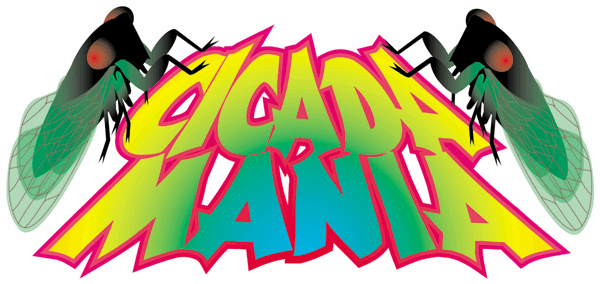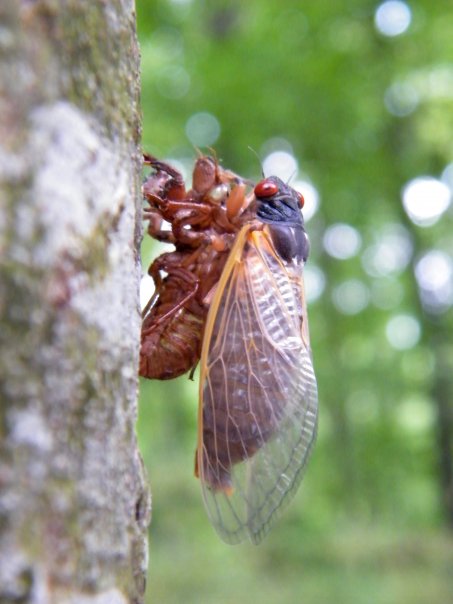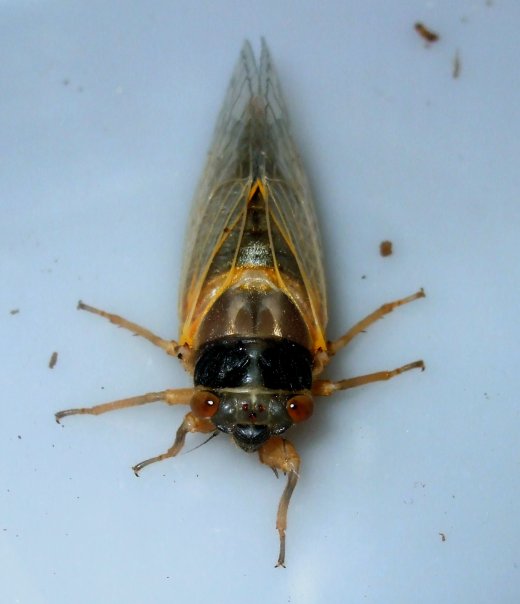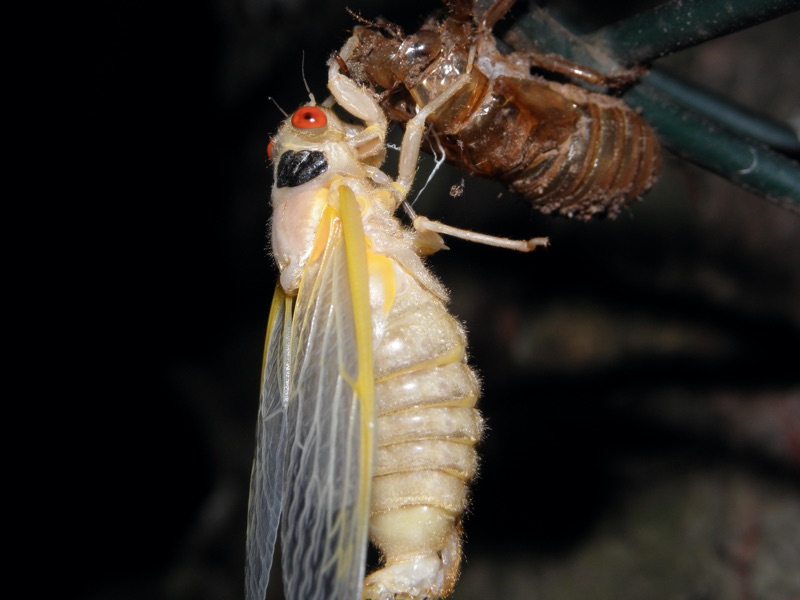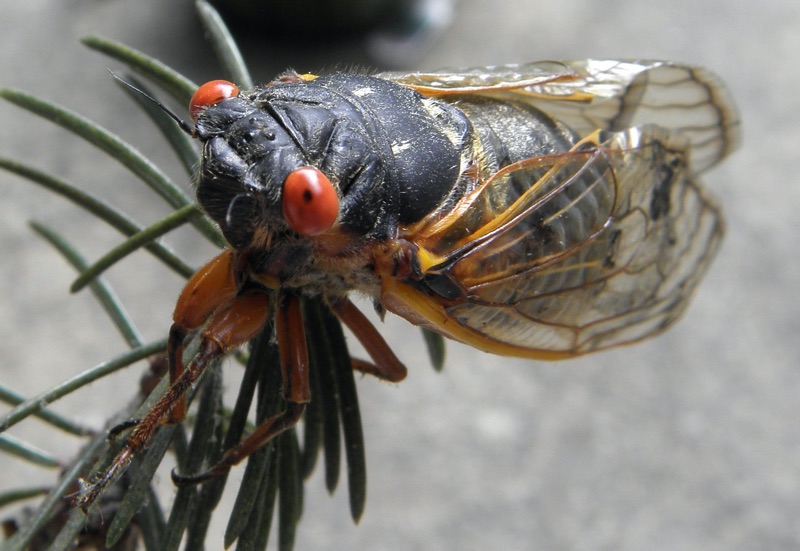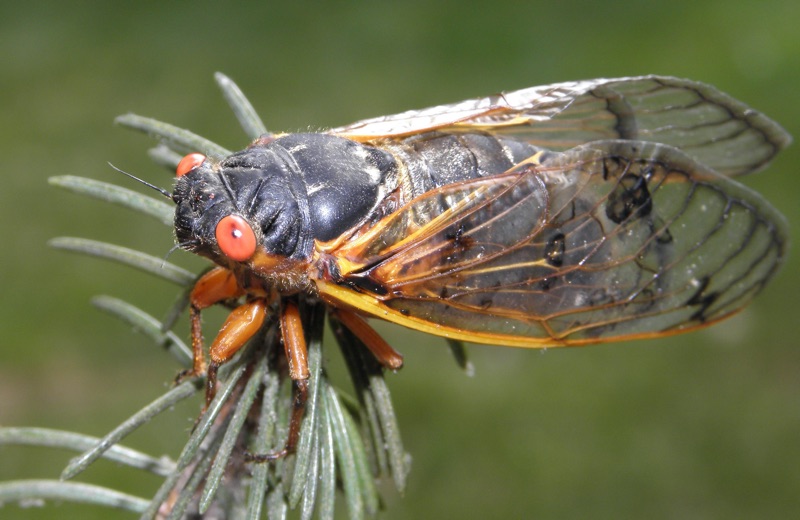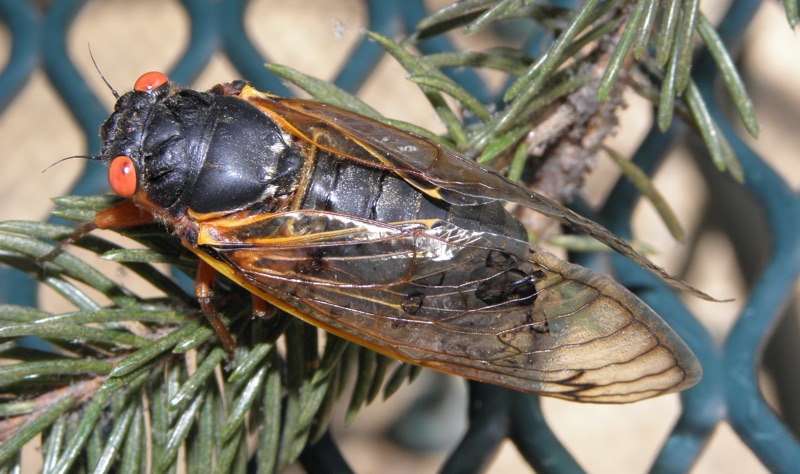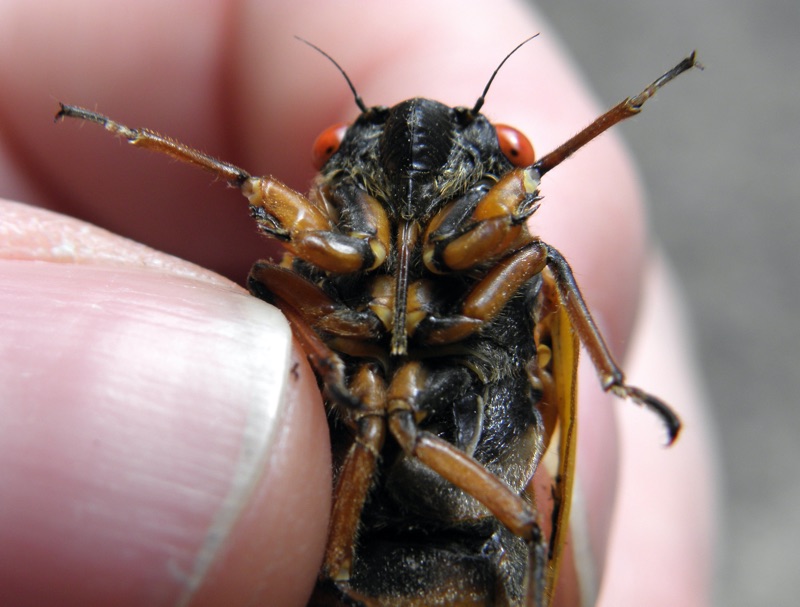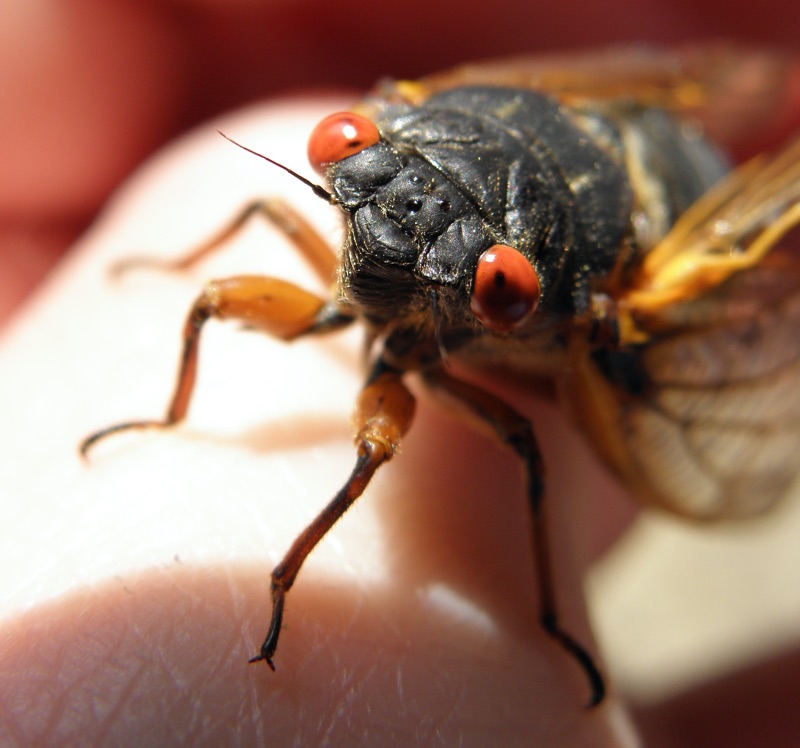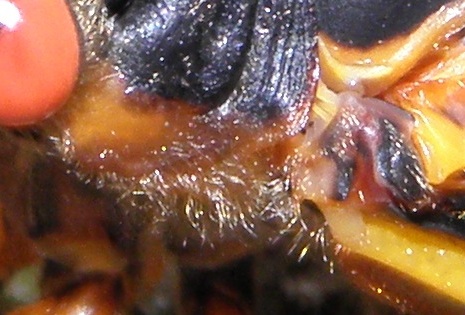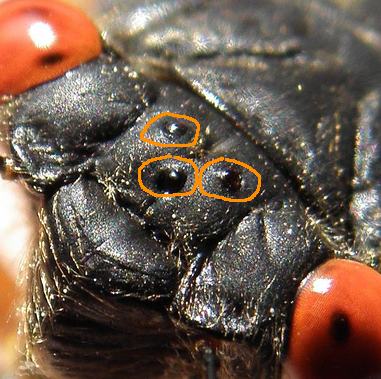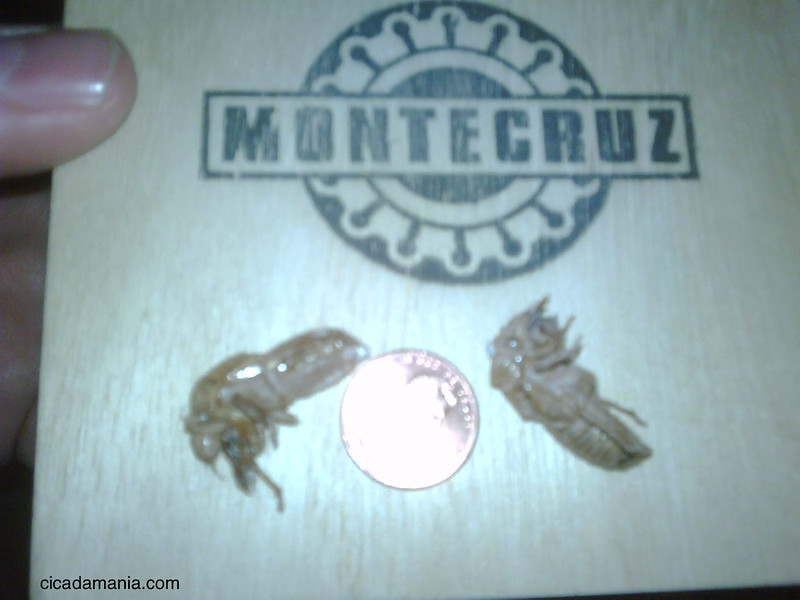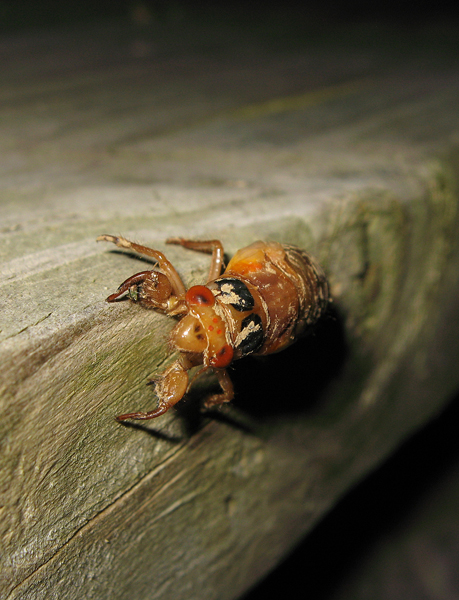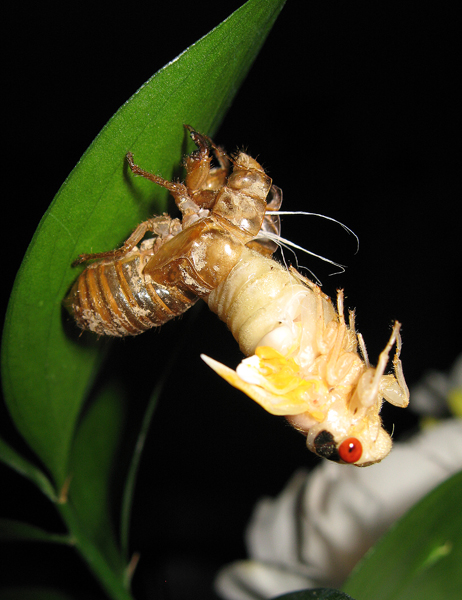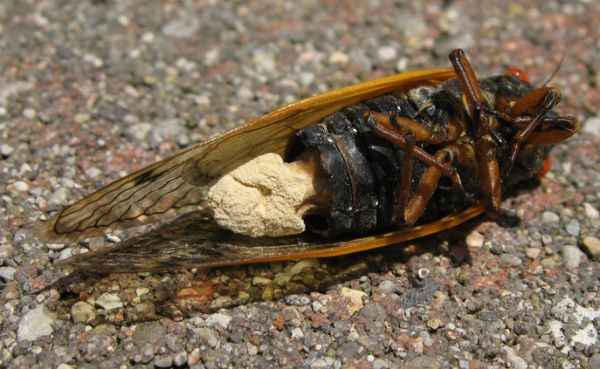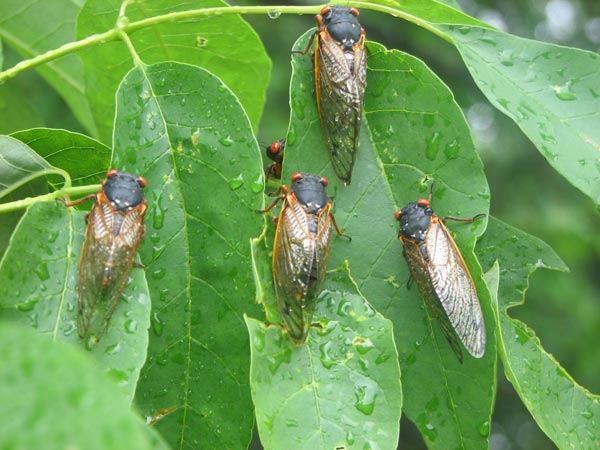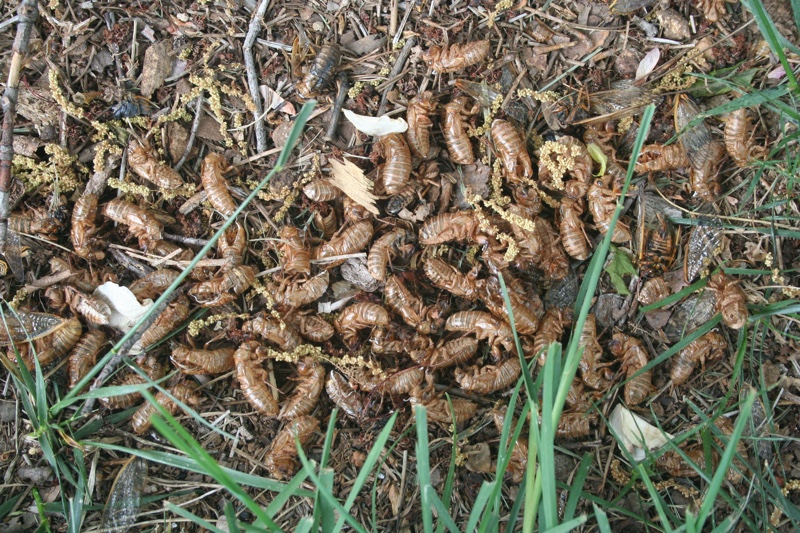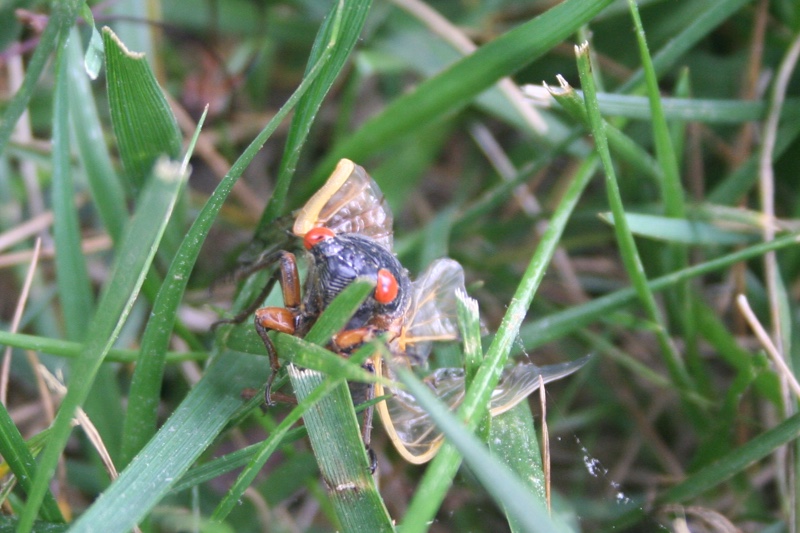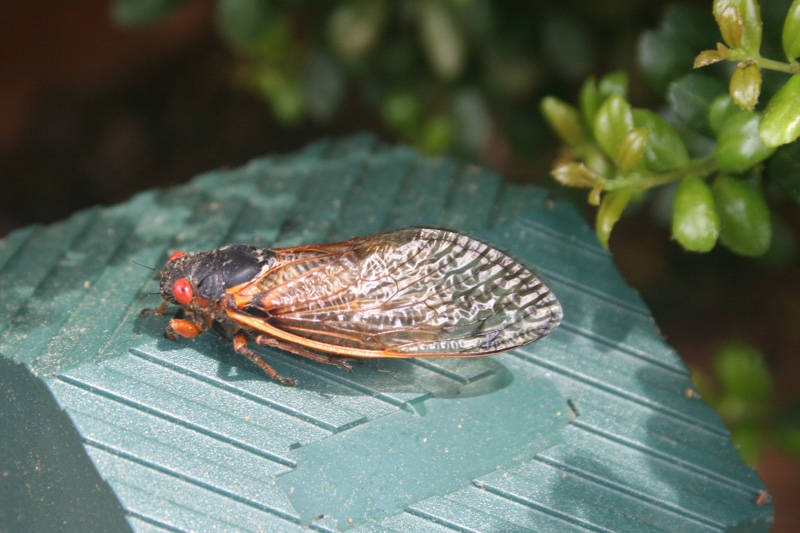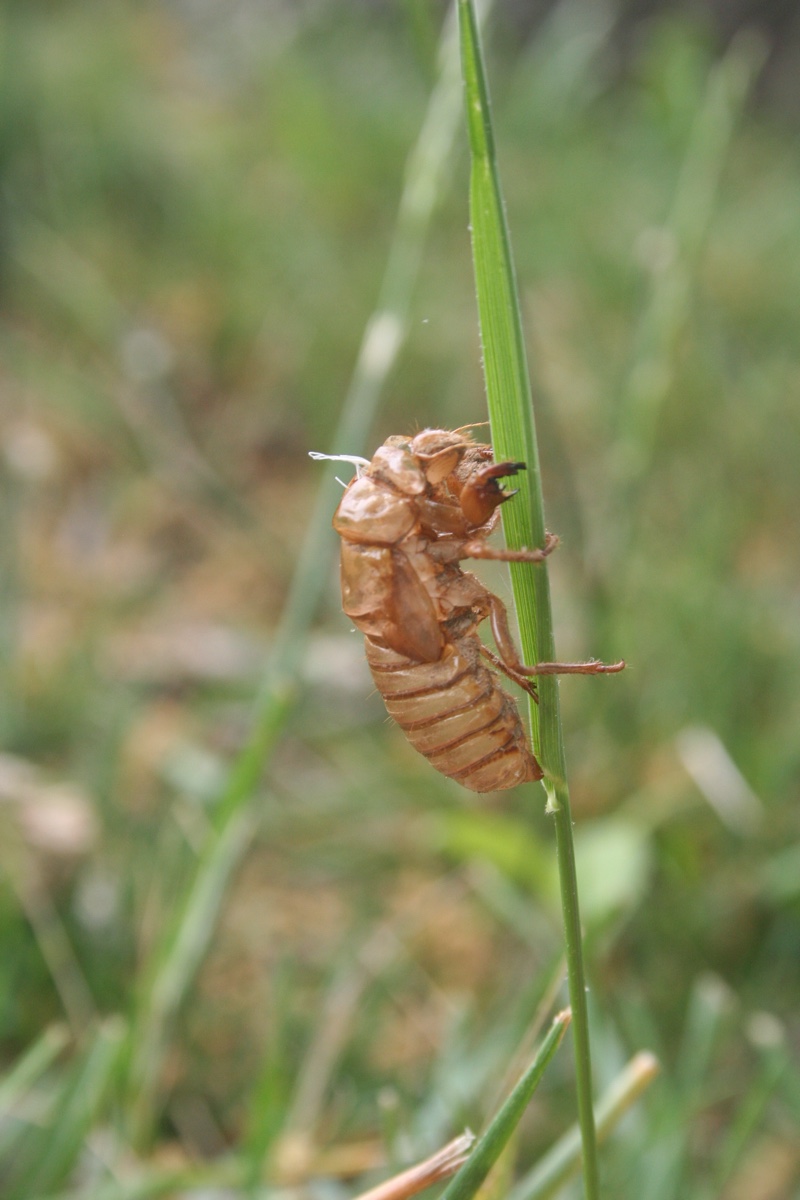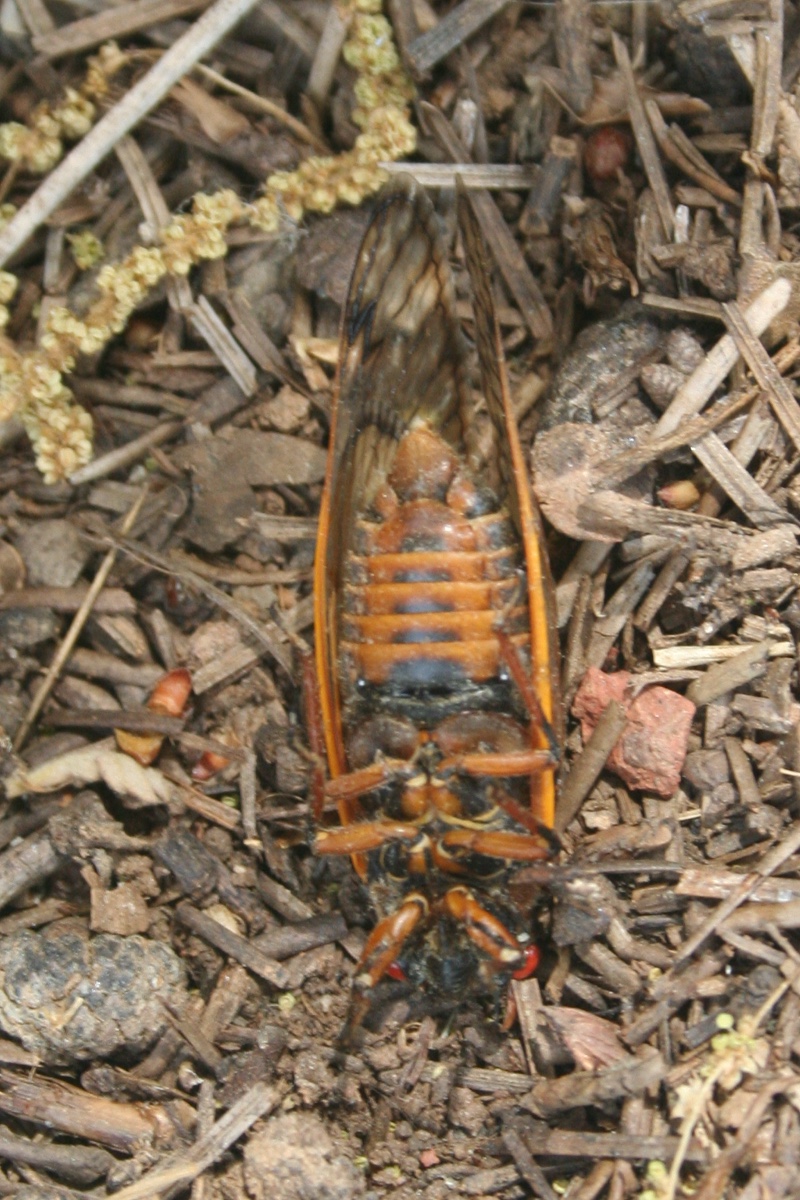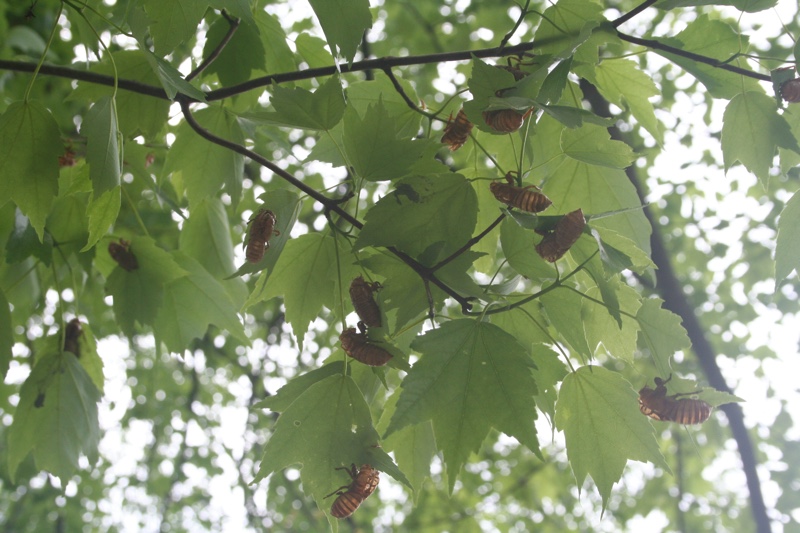Cicada Mania is 13 years old.
In 1996, I started the site to document some Brood II Magicicada photos I took in my back yard and at a friend’s wedding, and the site took off from there.
The site has had 7 different URLs over the years.
In 2004, during the Brood X emergence, the site received 50,000 visitors in a single day and I was interviewed on CNN (Ted Nugent haircut in a ponytail):
2007 and 2008 were great as well. In 2007 I got to meet fellow cicada enthusiasts Roy Troutman, Gene Kritsky, Gerry Bunker and Joe Green, and I was interviewed for a Japanese TV show:
And in 2008 I drove out to Ohio and stayed with Roy Troutman, met Gene Kritsky again, and met John Cooley for the first time.
Here’s the original logo:
It’s been a fun 13 years.
